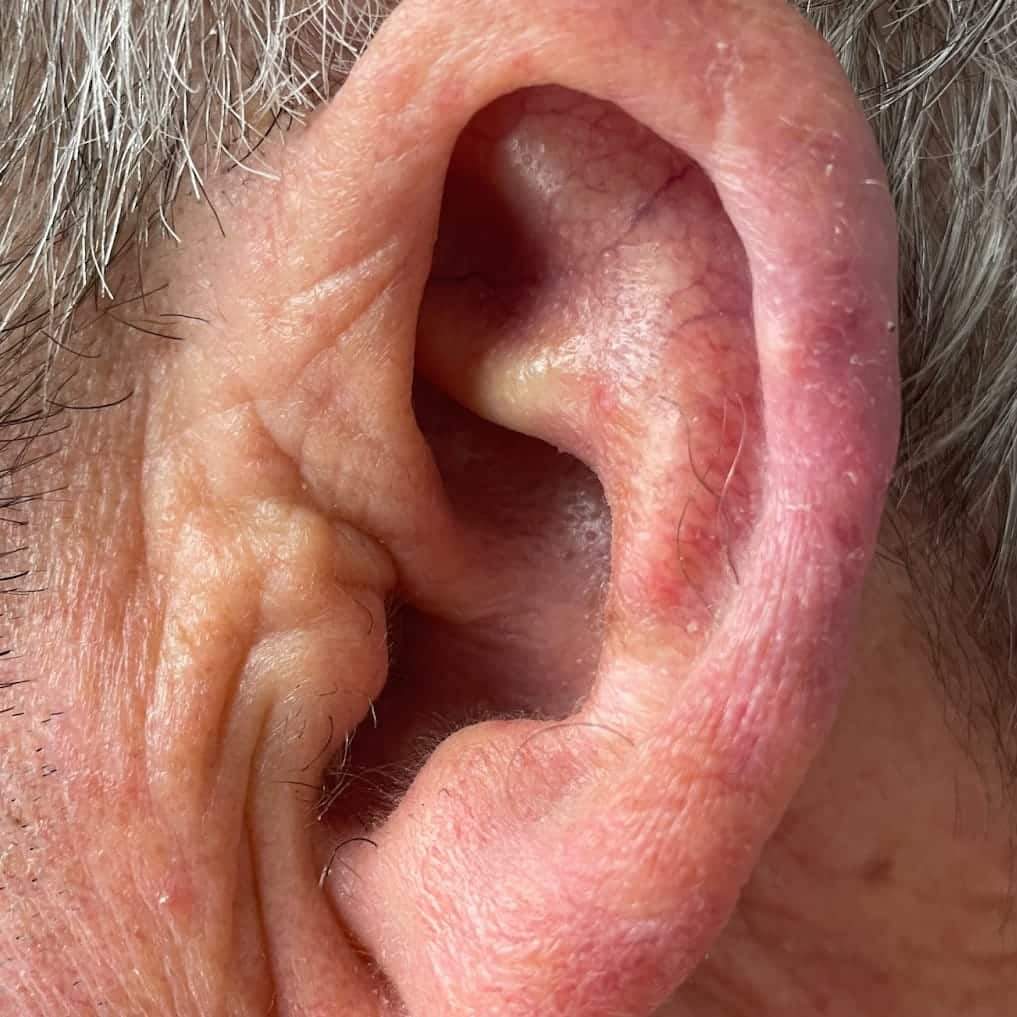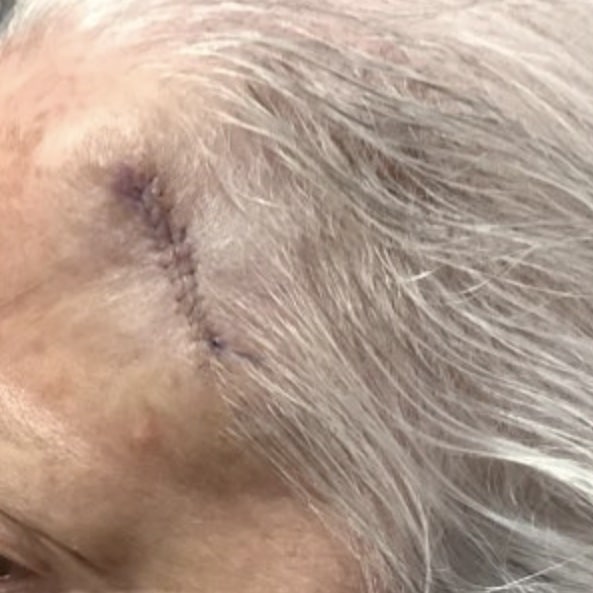Photodynamic Therapy (PDT)
Blue-Light Therapy (Photodynamic therapy) uses a specific kind of light to treat a variety of skin conditions. This treatment may be combined with a topical medication or used alone. PDT is approved to treat premalignant skin lesions and some superficial skin cancers. Photodynamic therapy can also be used for acne, improving fine wrinkles around the eyes, and skin rejuvenation.
What is photodynamic therapy (blue light therapy)?
Photodynamic therapy (PDT) is a medical treatment that uses a medication that becomes activated by light. The result is an activated oxygen molecule that can destroy the targeted cells. Precancerous cells (called actinic keratoses) and certain types of skin cancer can be treated with PDT.
Although PDT for the skin was first investigated in the 1990s for actinic keratoses, it was not as popular or widely used because long incubation times (usually 18-24 hours) were required for the medication on the skin before light activation. Since approximately 2001, PDT has become more widespread primarily because of advances including shorter incubation times (30-120 minutes).
How is photodynamic therapy performed?
The procedure is easily performed in our office. PDT essentially has three steps:
First, a light-sensitizing liquid (photosensitizer) is applied to the skin.
Second, there is an incubation period ranging from 30 minutes to 3 hours.
Finally, the skin is exposed to a specific wavelength of light that activates the photosensitizing medication.
How is photodynamic therapy used to treat the skin?
PDT using a medication called Levulan and a blue light is currently FDA approved for the treatment of skin precancers called actinic keratosis (rough scaly spots generally on sun-exposed skin). These treatments may help remove sun-damaged precancerous skin. Sun damage, fine lines, and blotchy pigmentation may also be improved after PDT. PDT also has been shown to decrease the appearance of pores and reduce oil glands, treat some kinds of acne, rosacea, and improve the appearance of small superficial acne scars.
What are the side effects of photodynamic therapy?
Anticipated side effects of photodynamic therapy include discomfort, burning, swelling, redness, skin peeling, lightening or darkening of skin tone, and possible hair removal. All of these are more likely in areas of sun damage or within pre-cancerous lesions. The peeling may last many days and the redness for a few weeks. If you are being treated with the BLUE-light without the medication levulan, you are unlikely to experience many of these side effects.
Is photodynamic therapy painful?
The application of the levulan is not painful. Exposure to the BLUE-light can be uncomfortable, but is usually tolerable. The first 1 to 3 minutes after light exposure there is usually a tingling sensation. The 3rd through 7th minutes are typically the most uncomfortable, but this is usually helped by a cool air blower. After the 8th minute the pain subsides and the last 8 minutes are usually well tolerated. Again, if levulan is not used on your skin, the BLUE-light session is usually pain free.
How long does a session last?
A BLUE-light session alone (without levulan) takes about 20 minutes. If your doctor uses levulan, the incubation time depends on the area treated and could be anywhere from 30 minutes to three hours followed by light exposure that lasts 16 minutes.
How many treatments will I need?
Depending on the extent and size of the area involved you may need several treatments spaced about 4 weeks apart. For limited disease a single session is often sufficient.
How much will photodynamic therapy cost and is it covered by insurance?
Photodynamic therapy sessions FOR ACTINIC KERATOSES (pre-cancerous lesions) are covered by most insurances. However, some insurances do require a prior-authorization. Other off-label uses for PDT, including acne, are considered cosmetic, and are therefore not covered by insurance.
Pre-treatment Instructions
Please notify your physician of any medical conditions that may be of significance to the treatment including pregnancy, cold sores (fever blisters,) any type of allergy, recent facial peels or surgery, and whether or not you have been on accutane or are using a topical retinoid.
AVOID sun exposure for at least 2 weeks prior to the treatment. Do not use self-tanning lotions, tanning booths.
Do not shave on the day of treatment
On the day of treatment please bring a wide-brim hat (should be at least 4 inches) and sunglasses. If your forearm or hands are being treated, please bring a long sleeve shirt and gloves.
Post-treatment Instructions
After the treatment you may experience redness in the treatment area, which can sometimes be severe and can last several hours to several days. There is also a strong possibility of more intense side effects such as blistering and burning if exposed to sunlight or prolonged, bright indoor light for the first 36-48 hours. The redness and peeling usually lasts no more than 4-7 days with incubation periods of 1-2 hours.
SUNSCREEN IS A MUST for the first 7-10 days after treatment and is most important the first few days.
Your hat and sunglasses must be worn for 48 hours after treatment when outside including while in a vehicle.
It is best to remain indoors for 48 hours after treatment. Any light can further activate the medication and it is thus best to avoid all light including sunlight AND indoor lighting.
Ice may be applied for 20 minutes per hour as needed after the treatment. Wash your skin with a gentle cleanser and an oil-free moisturizer should be used.
Try to avoid make-up and/or shaving for the first 48 hours.
Tylenol or Advil is usually sufficient to relieve any discomfort.




